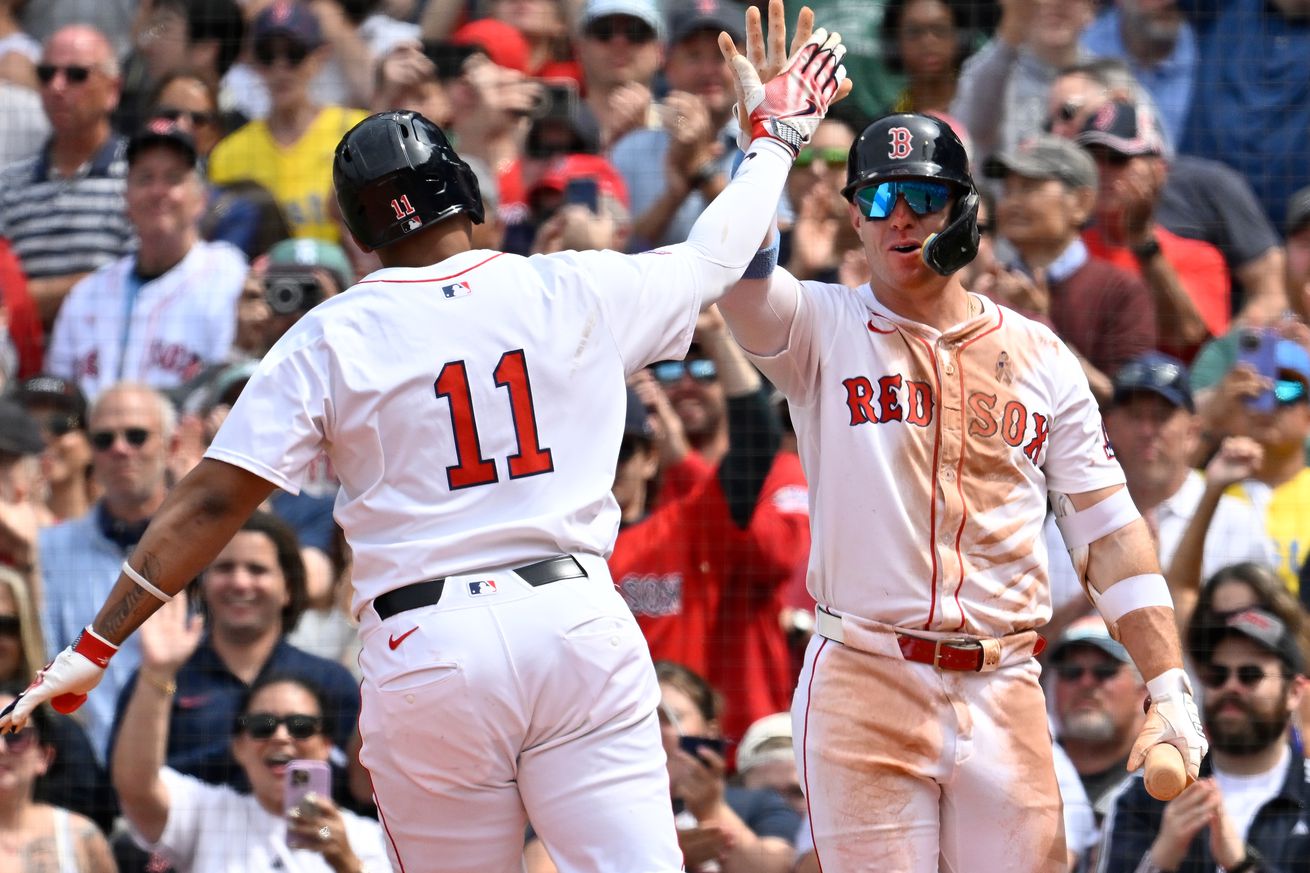
The Red Sox traded their best hitter to San Francisco on Sunday.
It was the type of stunning trade that only the Red Sox have had a penchant for in recent years. Develop a franchise player, sign them to a massive deal, things turn slightly south and trade the player. While the individual parallels aren’t perfect, it’s hard to ignore that only one team has lost not just one, but three franchise players in the last five years (Devers joins Xander Bogaerts and Mookie Betts on the West Coast).
Devers and the Red Sox did not part way on a high note. He was clearly not pleased the team signed another third baseman right before the start of the season, he was vocally unwilling to move to first base when they lost Triston Casas for the season. The Boston Globe’s Peter Abraham confirmed that the disconnect between Devers and the front office contributed to the trade (Bluesky link):
PerRed Sox sources: the team’s feeling was that a $313.5M contract comes with responsibilities to do what is right for the team and that Devers did not live up to those responsibilities.
They had enough and they traded him.
— Peter Abraham (@peteabeglobe.bsky.social) 2025-06-15T23:06:18.207Z
You should read our Red Sox and Giants sites, Over the Monster and McCovey Chronicles for more coverage of the trade, but this nugget from Buster Olney inspired today’s question:
The Red Sox did not shop Rafael Devers around the league before trading him, per @Buster_ESPN. pic.twitter.com/pMHiYJ8pqb
— Just Baseball (@JustBB_Media) June 16, 2025
It’s wild that the Red Sox apparently traded the face of their franchise without shopping him around to other franchises to see what type of trade packages other teams might put together. There are optimistic and pessimistic ways to read the return the Red Sox received. Baseball analysts will argue about the metrics and value of this trade, the contract, team context and the return for years.
But what is unquestionable given the way Sunday’s trade went down is that we may never know if the Red Sox got the best possible return for Devers because they didn’t really give teams other than the Giants the chance to answer the bidding.
Which leads to today’s question: should the Cubs have been interested in trading for Rafael Devers? The answer is more complicated than you may think. For starters, it’s not everyday that one of the top 15 hitters in the sport becomes available at age 28 with his contract for the foreseeable future locked in. The Cubs were able to trade for a year of Kyle Tucker, but they will certainly have to negotiate a much bigger sum than the $250 million owed to Devers over the next eight years to keep his bat in their lineup after 2025.
There’s an argument to be made, especially if you’re a team that doesn’t have a strong track record of signing franchise guys, like the Giants, that trading for that bat is a solid play. And while the Cubs really don’t need Devers at third base or first base given how their young talent is aligned, it’s hard to make the case that they should be out on a player who’s hit .279/.349/.510 with a career OPS+ of 129 and 215 home runs in 4549 plate appearances. There’s certainly a case to be made that you just get the guy on your team and figure out the plate appearances later, even if Seiya Suzuki is your designated hitter with a much more team friendly deal and a .275/.349/.479 slashline with a career OPS+ of 131 and 72 home runs over 1916 plate appearances. Now, Suzuki’s cost-controlled deal isn’t the only difference between him and Devers, the two year age difference also matters. Plus, the Cubs only have one more guaranteed season of Seiya’s bat, they’d be locking in Devers through 2033.
It’s a more complicated question than it appears to be at first glance.
So have at it. Should the Cubs have been interested in trading for Devers had the Red Sox shopped him on the open market?